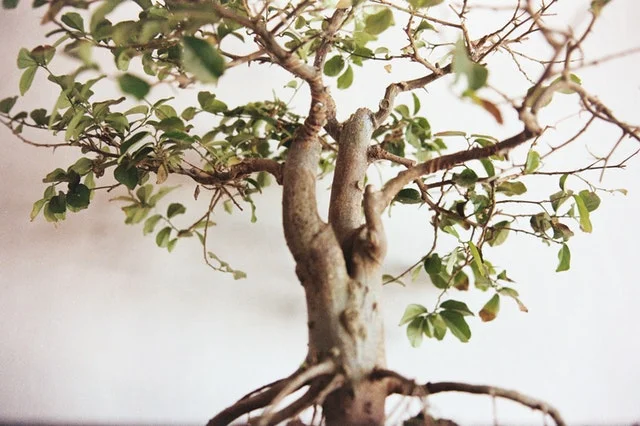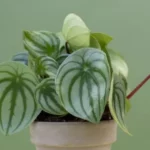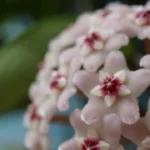Table of Contents
How to Care for Jade Bonsai
The Jade Bonsai plant features deep green leaves that are oval. Jade Bonsai plants are native to South Africa and features a thick trunk with a dense structure of branches.
These plants are native to deserts and dry places; therefore, the leaves have adapted to be able to retain water. When these plants can continue growing, they can grow as tall as ten feet.
What Does Your Jade Bonsai Require?
Light Requirements?
Jade Bonsai plants tend to thrive in areas with bright sunlight or partially shaded. These plants require about ten hours light per day to thrive, however these needs will vary depending on specific plant.
When these plants are placed in direct sunlight the edges of the leaves will turn reddish and with a small amount of shade the leaves will be green and have a healthier look.
Temperature Requirements?
Jade Bonsai plants should never be allowed to be in temperatures that are less than five degrees to centigrade.
These plants are regarded as indoor plants although they can survive outdoors when in areas of high temperatures and direct sunlight. The ideal temperature for these plants is between eighteen and twenty-three degrees centigrade.
Soil Requirements?
Jade Bonsai plants will thrive better when they are in mixed soils. Jade Bonsai require soil that is succulent and well drained.
The best soils for these plants will consist of one part organic and one part peat moss with three parts of sand.
Humidity Requirements?
Although these plants can be kept as indoor plants its important that they are kept at a suitable level of humidity.
Misting Jade Bonsai plants will enable the plants to have a good level of humidity and retain healthy green leaves. Misting is a good idea when the plants are indoors where the air is very dry.
A tray is a good way to increase the level of humidity that the plant is in, these are shallow trays filled with stones and covered with water.
The water in the tray should not touch the plant pot containing the plant because as the water evaporates it creates a moist environment.
How to Water?
Less water is better than too much water for the Jade Bonsai plants. These plants have fleshy leaves which can store water for long periods of time. When conditions are ambient these plants can be watered once every ten to twenty days.
When watering the plants, it is best to do it slowly so that the water can be absorbed by the soil gradually.
During the winter months these plants become dormant therefore they do not require as much water. Reducing the amount of water will greatly reduce the risk of root rot.
Drainage
It is important that Jade Bonsai plants have pots that have drainage holes. The best type of pots to use for these plants are concrete, ceramic, porcelain, and plastic pots. Whatever material is used for the pot it should be a material that does not retain or absorb the water.
How to Fertilize?
Fertiliser is essential for Jade Bonsai plants as it added necessary nutrients to the soil. Nutrients tend to leave these plants due to the water. New growth will appear during the spring months and this is when fertiliser should be added.
Chemical fertiliser or organic liquid fertilisers are the best to use on Jade Bonsai plants.
A good balance is needed for these plants to grow. During the main growing season and fertiliser should be given every two weeks. These plants will respond quickly to fertiliser therefore it is an important part of caring for these plants.
Extra Tips for Jade Bonsai
Pests and Diseases
Jade Bonsai plants are prone to some common house plant pests. One of the biggest problems for these plants is mealy bugs, which are bugs that have a foamy white appearance.
These pests can be removed easily by using a cotton swab dipped in alcohol to wipe the affected area.
Aphids are another common problem for these plants, and they will damage these plants by sucking the sap from the plant leaves. Aphids secrete honeydew which is a thick liquid that coats the leaves and gives a sticky appearance.
The sticky liquid attracts wasps, ants, and the growth of fungus. Ladybird beetles are a good thing to have on your plant as they will help to keep the plant free from aphids. Other methods to deal with the problem of aphids is to use insecticides or other remedies.
Root rot is a problem that affects these plants, and this caused when fungus gets into the root, which can be through damaged roots or wounds.
There are other factors that can cause root rot, and this includes lack of water, over watering and poorly drained soils.
There are no chemical treatments that are available to deal with this problem. The best way to deal with this problem is to remove all the roots that have been affected, sterilise the pot where the plant is and repot the plant in a fresh clean pot.
Pruning
During the spring and summer months is the best time to prune Jade Bonsai trees, as it is during this time that the plant is actively growing. To prune these plants, use a clean sharp tool to cut away branches that are awkward or heavy.
The branches should be clipped just above the node as this will allow future growth. Before removing large roots, the soil should be allowed to dry out.
Propagation
Jade Bonsai plants tend to be slow growing and keeping these plants in small pots will enable them to maintain dwarf size. To get a larger plant it should be potted in a larger pot.
Propagation from a cutting
A plant cutting that is long between ten and twenty-five centimetres and thick is the best to use for propagation and it can be a single straight trunk or a cutting with stems branching off.
Propagation from Roots
The process to propagate from roots is:
- Remove the leaves from the bottom five centimetres of the cutting by pinching them.
- Put the stem into a glass with about five centimetres of water. The water should come up to the bottom leaves but do not past this.
- Roots can start to appear within a couple of days, but it can take up to a week. Leave the cutting in the water until it has developed a good root.
Repotting Jade Bonsai
It is best to repot Jade Bonsai plants every two years and this should be done during the spring months. When repotting the Jade Bonsai, it’s a good idea to remove the soil and root ball.
Initially after repotting the new plants should be placed in a shady area for a couple of weeks to allow the new roots to grow. It is best to repot the plant before it starts looking damaged.
FAQ
Can you bonsai a Jade plant?
Jade plants are slow growing plants that are commonly kept as house plants. These plants will maintain a dwarf size when they are kept in a small plant pot.
How Do You Make a Jade Bonsai?
A jade plant can be grown as a Jade Bonsai easily as all that you need to do is trim the plant on a regular basis and keep it in a small plant pot.
Wiring Your Jade Bonsai Tree
Wiring techniques are very useful techniques to train a bonsai plant and shape it to form certain styles and shapes.
it It is best to use a thin training wire as this will hold the branch in the required position.
Avoid wiring a jade bonsai just after it has been re-potted. Wind the training wire round the direction of the branch so that the wire doesn’t allow it branches to loosen.
Avoid over winding the wire round the branch, as this can cause the branch to break.
How Do You Care for A Jade Bonsai Tree?
The Jade Bonsai tree is classed as an indoor plant but it’s important that it is kept in the correct conditions to enable it to thrive.
It is easy to grow a Jade Bonsai tree and one of these plants can be grown within months. The Jae Bonsai tree will not do well in temperatures that are lower than five degrees centigrade.
Why Is My Jade Bonsai Dropping Leaves?
There are a couple of reasons that your Jade Bonsai may drop leaves, and these are both connected with the temperature. If the plant is kept in temperatures that are too high or too low, then leaves may begin to drop.
Help Your Jade Bonsai Tree to Grow
One of the best ways to encourage tour Jade Bonsai to grow is to put it in the sunniest spot that you can, as they tend to thrive in bright light.
To begin with it is best to keep the plant indoors as this will keep it away from winds and animals that may cause it damage.
Photo by Zulian Yuliansyah from Pexels


